- Home
- Deborah Harkness
The World of All Souls Page 18
The World of All Souls Read online
Page 18
Stephen was almost a decade older than Rebecca, and he came of age in the 1960s. His musical tastes, love of fads, and use of slang all captured that particular moment in history. This made him the butt of many affectionate jokes from his students at Wellesley, who treated him as a lovable hippie fossil.
Stephen was a great reader and had wide-ranging tastes in world literature. He was also a great storyteller and loved this bedtime ritual with his daughter.
R
RAKASA
Rakasa is Ysabeau’s beautiful mare, an Andalusian horse whom Diana rides at Sept-Tours. Her name is from an Arabic word and means “dancer.”
SIR WALTER RALEIGH
Origin of name: Walter is an English name, with roots back in an Old German variation meaning “ruler of the army.”
Date of birth: 1552 or 1554
Physical description: Dashing. Broad-shouldered with blue eyes and curling black hair, white teeth, and a dark beard. Fond of wearing silver and black, which were Queen Elizabeth’s colors.
A member of: Oriel College, Oxford University, the School of Night, the Knights of Lazarus
Family and romantic relationships: Married to Bess Throckmorton, with whom he had three sons
Personal history: Walter Raleigh was a soldier and a staunch Protestant from his early youth. After he took part in the successful military campaigns to put down Ireland’s Desmond Rebellions, the Crown awarded him land for his services. Raleigh was an indifferent landlord and a poor manager, however. He preferred adventuring and fighting, and he caught the eye of Queen Elizabeth, who needed a man like him to help her fill the royal coffers. In 1584 she awarded him a charter to explore any distant lands not populated or ruled by Christians and establish English colonies there. The tremendous wealth Spain was extracting from the New World inflamed Raleigh’s and Elizabeth’s imaginations. They intended these British colonies to be bases from which they could attack and plunder Spanish ships and also find extensive reserves of gold and silver. Raleigh would receive one-fifth of the treasure mined there, as well as the glory. This venture did not succeed as they’d hoped, however, and Raleigh’s colonies in the Carolinas, including the Lost Colony of Roanoke, yielded disease, disappointment, and death.
Despite these failures in Virginia, Raleigh remained one of the queen’s favorites and was often present at court. At home he wrote poetry and spent time in the company of scientists and men of letters, including his friends from the School of Night. He also continued to make voyages to the Americas in search of treasure, took part in naval skirmishes against the Spanish, and held various seats in Parliament. He was exactly the kind of powerful man Philippe de Clermont valued—a soldier, a sailor, a privateer, and a man of influence in British government. And so Philippe gave him command of the Knights of Lazarus in England, one of the eight provincial masters who reported directly to Philippe.
As Diana Roydon learned almost immediately, Raleigh appreciated strong, beautiful women. He fell in love with one of Queen Elizabeth’s favorite maids, Elizabeth “Bess” Throckmorton, a trusted gentlewoman of the Queen’s Privy Chamber. Bess became pregnant, and Raleigh married her secretly in 1591, without the queen’s permission. When the queen eventually learned of Bess’s pregnancy, she was enraged by what she saw as betrayal by two of her court favorites. Elizabeth confronted Raleigh, and in a desperate and futile attempt to curry favor he denied being the father. When the truth of their marriage was finally confirmed, the queen banished the pair from court, and they refused, stubbornly, to ask for her forgiveness. They remained out of favor for five years but continued to be devoted to each other. They had three sons, though their first died in infancy during a plague epidemic.
After the queen’s death, King James imprisoned Raleigh in the tower, twice: first on charges of treason, which were eventually dismissed, and the second time for crimes committed by soldiers under his command while in the Spanish colonies of South America. He was executed for the latter in 1618 and was survived by his wife, Bess, who fought to clear his name.
See also: Bess Throckmorton; LITERATURE: The Lie
CHRISTOPHER ROBERTS
Origin of name: Roberts is of Norman origin, meaning “bright fame.”
Date of birth: November 7, 1974
Astrological sign: Scorpio
Physical description: Dark brown eyes, walnut-colored skin, high cheekbones angled under straight brows, a deep voice, and a wrestler’s strong build
A member of: Yale University faculty, Department of Biochemistry and Molecular Biology
Family and romantic relationships: From an African American family in Alabama. Chris is not married.
Personal history: Christopher Roberts is Diana’s closest friend and her colleague at Yale University, where they met when they both began teaching there. Chris recognizes that Diana is different from most people he knows, so he’s not shocked to learn that she’s a witch, nor that vampires, daemons, and magic are real. His training as a scientist taught him to look for evidence and to entertain possibilities, rather than rely on prevailing opinions about the state of the world. A loyal friend, Chris remains fiercely protective of Diana and feels a kinship with her because of her difference.
Chris grew up in Alabama, an African American who comes from, in his words, “a long line of field hands” as well as a Cherokee grandmother. He is a realist and seems to enjoy disabusing others, including vampires, of their romantic notions about the world. As a black man in America, Chris has no illusions about the effects of racism or the ends to which some people will go to preserve power. He recognizes almost immediately that the Congregation’s covenant is a mechanism to preserve segregation between creatures and promote racial purity by preventing witches from giving birth to babies fathered by vampires.
Chris is a proud graduate of Harvard University, where he studied molecular biology. He is a gifted scientist and researcher—a genius—and, indeed, he received a MacArthur Fellowship. This is given only to individuals whose achievements demonstrate exceptional creativity and who are on the precipice of great discovery or a game-changing idea. Following this award, Chris was swiftly granted tenure at Yale.
Despite his genius Chris has a terrible memory for names and therefore presides over a lab full of students he’s nicknamed as characters from prime-time television shows of the past thirty years. They are currently collaborating with Dr. Matthew Clairmont as well as his colleagues Dr. Miriam Shephard and Dr. Marcus Whitmore on a project to unravel the mysteries of creature DNA. Their findings thus far support the MacArthur Foundation’s judgment that Dr. Roberts was on the precipice of a great discovery.
SIGNORINA ROSSI
Signorina Rossi was an Italian woman of Malá Strana whom Diana met and gossiped with in Prague. Rossi had spent time before in London, where she’d been mistress to an Italian artist. When Diana met her, she was mistress to another Italian artist, a man who wanted to introduce the art of glass cutting to Prague.
MATTHEW ROYDON
Full name and other names: Shadow, Matthew de Clermont, Sebastian St. Clair
Origin of name: Roydon is a locational surname and derived from Old English ryge and dun, meaning “rye hill.”
Date of birth: Unknown
Physical description: There are no attributed portraits or descriptions of Matthew Roydon surviving. A recent discovery in the All Souls world of a Hilliard miniature depicting a mysterious, dark-haired man, has been linked to him, however.
A member of: The School of Night, the Knights of Lazarus
Family and romantic relationships: Historians have not found records of poet Matthew Roydon’s marriage. In Gonçalves MS 4890, an unknown English commonplace book discovered in Spain, a poem about “Diana,” as well as a poesie “for his beloved on the feast of All Souls in the year of our Lord 1590” are both signed by Matthew Roydon.
Personal history: Very little is known a
bout the historical figure of Matthew Roydon, which is why he is so alluring a character. He was the shadow alongside famous men of his time, and his influence can be gleaned only from tantalizing snippets. It is thought he could have been the Matthew Roydon who graduated from Oxford with an M.A. on July 7, 1580. In London in 1593, a “Matthewe Royden” was then recorded to “maketh his abode at the blacke ffryers at A showmakers howse there.”
Known as a poet, Roydon moved in prominent literary circles of the time, a friend to Philip Sidney, Christopher Marlowe, Edmund Spenser, and George Chapman, who dedicated The Shadow of Night to him in 1594. He is mentioned among companions who shared Marlowe’s freethinking and part of the group sometimes known as the School of Night. Roydon’s close friendship with Philip Sidney was celebrated in his Elegie, or Friends Passion, for His Astrophill, which Roydon wrote on Sidney’s death and was often printed alongside Spenser’s work subsequently. There is speculation about other works that could have been by Roydon but are not properly attributed.
Historical evidence suggests Matthew Roydon could have been part of William Cecil’s spy network and was in Prague in 1591, sending news back to England about Edward Kelley. He also went to work for James VI of Scotland. He then disappeared after the death of Christopher Marlowe.
Later in life it appears that Roydon entered the service of literary patron Robert Radcliffe, 5th Earl of Sussex. In a work dedicated to the Earl of Sussex’s daughter, Elizabeth, in 1609, Roydon was described as “a poetical light . . . which shines not in the world as it is wisht, but yet the worth of its lustre is known.” Matthew Roydon’s death has been recorded by some as occurring in 1622, but this date is uncertain.
Diana Bishop had to adjust to her Matthew being this man in the sixteenth century. As he slotted back into his role as Matthew Roydon, poet and spy for Elizabeth I, he took on his old behaviors and ways of thought bred from a very different society to the present day. Diana, however, was never going to slot into the role of a subservient Elizabethan housewife, however imperious his tone became.
When I came up with the idea of a story about a witch in denial of her power and a vampire interested in science, I knew that the vampire at the center of the book would have been a figure associated with the Elizabethan circle of intellectuals some call the School of Night: Matthew Roydon, the mysterious poet and spy to whom George Chapman dedicated his poem The Shadow of Night.
RUDOLF II
Full name and other names: Holy Roman emperor and king of Bohemia, king of Hungary and Croatia
Origin of name: Rudolf is from the Germanic name Hrodulf, derived from the elements hrod, “fame,” and wulf, “wolf.”
Date of birth: July 18, 1552
Astrological sign: Cancer
Physical description: Rudolf was a small man with pale, protruding eyes, a disproportionately long chin, a pronounced underbite, and full, fleshy lips.
A member of: The Order of the Defeated Dragon
Family and romantic relationships: Rudolf was from the House of Hapsburg and the eldest son of Maximilian II. He never married but had several illegitimate children with his mistress, Katharina Strada.
Personal history: Rudolf II was heir to the Hapsburg family throne in Austria, king of Hungary and Croatia, king of Bohemia, and Holy Roman emperor (nominal head of many different Catholic principalities and political entities in central and southern Europe). To groom him for this last title, he was sent to the court of his uncle, Philip II of Spain, where he lived from the age of eleven to nineteen.Philip II was also a Hapsburg, and members of the royal House of Hapsburg occupied the throne of the Holy Roman Empire continuously from 1438 to 1740. When Rudolf returned to Austria, he was criticized for being too Spanish—though his Spanish mother thought he was just perfect.
Rudolf’s distinctive appearance was a legacy of the Hapsburgs, who lived by the axiom that “the best spouse for a Hapsburg is another Hapsburg.” This resulted in characteristics such as the Hapsburg lip or the Hapsburg jaw, known today as mandibular prognathism. Someone with this condition has a jaw that juts out and an abnormally thick lower lip. Rudolf was far from the worst afflicted; the last Spanish Hapsburg could barely make himself understood when he spoke.
Rudolf was less interested in affairs of state than in the natural sciences, astrology, alchemy, and the arts. He attracted some of the best scientific instrument makers of the time to his court—for example, Erasmus Habermel, whom Rudolf commissioned to make an astronomical compendium for Diana. As we know, he patronized the alchemists John Dee and Edward Kelley and was known to perform alchemical experiments in his own private laboratory. He also dabbled in the occult sciences.
Rudolf was not a great political success, but he was a key Renaissance figure for his cultivation of the leading artists of the time. Under his rule Prague became a center of the arts in Europe. In 1588 Rudolf invited the celebrated gem artisan Ottavio Miseroni to Prague to establish a workshop that rivaled those of Miseroni’s native Milan. In the 1580s he hired Bartholomeus Spranger, the most significant Northern Mannerist painter of his generation, as court artist. Rudolf was known to spend hours contemplating his treasures; as he told Diana, “Only vulgar objects can be seen at once, for they have no mysteries to reveal.”
Rudolf’s collection of art and curiosities was famous throughout Europe. Before he and Diana traveled to Prague, Matthew speculated that if Rudolf had the Book of Life, it would be in his cabinet of curiosities—and he turned out to be right. Very few were allowed to see this idiosyncratic collection of shells, fossils, scientific instruments, rhinoceros teeth, leopard’s claws, and erotic paintings; Rudolf’s invitation to Diana was evidence of his besotted state. Rudolf also kept a menagerie of exotic animals that were allowed to roam freely, requiring frequent compensation to the families of their unfortunate victims.
Rudolf was a reserved and secretive man who was prone to melancholy, another Hapsburg trait. Like Elizabeth I, he engaged in diplomatic negotiations for marriage but never actually married. He did have several illegitimate children with his mistress, Katharina Strada, who in fact was pregnant during Matthew and Diana’s trip to Prague. These included Rudolf’s eldest son, the notorious Don Julius Caesar d’Austria, who went slowly mad and eventually killed his lover, dismembering her body.
S
ELEANOR ST. LEGER
The fair Eleanor St. Leger was from a prestigious English family in the ruling elite of Jerusalem after Pope Urban II’s First Crusade. Eleanor met Matthew, who was summoned there by Philippe in 1140, and they fell deeply in love. The St. Leger family clashed politically with the de Clermonts, however, and Matthew’s brothers Hugh, Baldwin, and Godfrey urged him to put her aside. Matthew refused, and in a squabble with Baldwin over the St. Legers and de Clermonts, things got out of hand. Eleanor tried to intervene and was killed by Matthew in a fog of jealousy and blood rage. Before Baldwin and Matthew understood what had happened, Eleanor had lost too much blood and died. Matthew carried his guilt deeply and never felt for anyone what he did for Eleanor until Diana came into his life.
WILLIAM SHAKESPEARE
Full name and other names: William Shakespeare, the Bard of Avon
Origin of name: Shakespeare could be of Old English origin, a nickname for a spearman, or a belligerent, argumentative person.
Date of birth: Traditionally thought of as April 23, 1564 (baptism recorded April 25, 1564)
Astrological sign: Taurus
Physical description: The disputed portraits we have of Shakespeare do not give us a clear picture of what he really looked like, and no descriptions of him from the period have been found. General features gleaned from each are that he probably had dark brown hair, with a receding hairline, and perhaps a stocky stature. He is most often depicted with a closely cropped beard.
A member of: The Lord Chamberlain’s Men, the King’s Men
Family and romantic relationships: Shakespe
are was the son of John Shakespeare and Mary Arden and was married to Anne Hathaway, with whom he had three children: Susanna and twins Hamnet and Judith. Shakespeare’s romantic life outside of marriage is hinted at through the Fair Youth and the Dark Lady of his sonnets: “Two loves I have of comfort and despair.”
Personal history: As is the case with so many people of this period, the details of Shakespeare’s life remain murky. This in no way suggests that Shakespeare was not the man who wrote the famous works of literature that established him as one of the greatest writers in the English language, however many theories are put forward to the contrary. It simply means that like Matthew Roydon (and other men and women of the time who were born in ordinary circumstances but went on to live extraordinary lives), his status during his lifetime wasn’t noteworthy enough for particular attention.
Shakespeare’s father, John, was an alderman and a glover; his mother, Mary, came from a landowning farming family. He was the third child of eight and the eldest son. His marriage to twenty-six-year-old Anne Hathaway when he was eighteen is recorded in a marriage license issued on November 27, 1582, and six months later their daughter Susanna was baptized, on May 26, 1583. The twins Hamnet and Judith came two years later, baptized on February 2, 1585. Sadly, Hamnet died at the age of eleven in August 1596.
Only scraps of Shakespeare’s life can be pieced together following his marriage and his entry into the London theater scene. He produced most of his known work between 1589 and 1613 and was an actor and writer for a playing company called the Lord Chamberlain’s Men, later the King’s Men (when it came under the patronage of King James I), who built and performed at the famous Globe Theatre on London’s south bank. Richard Field printed Shakespeare’s early poems in the 1590s, and it is almost certain they knew each other from childhood, their families connected and living in the same area.

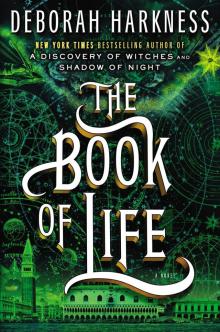 The Book of Life
The Book of Life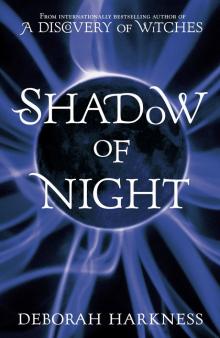 Shadow of Night
Shadow of Night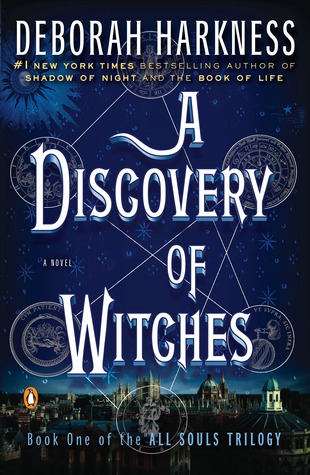 A Discovery of Witches
A Discovery of Witches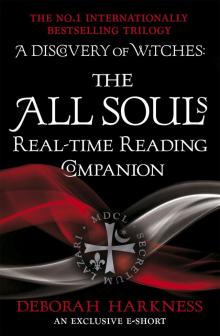 The All Souls Real-Time Reading Companion
The All Souls Real-Time Reading Companion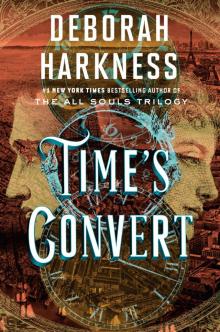 Time's Convert
Time's Convert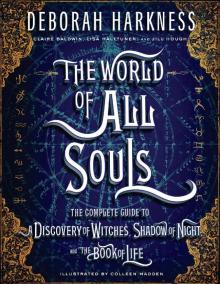 The World of All Souls
The World of All Souls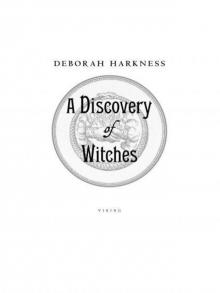 A Discovery of Witches: A Novel (All Souls Trilogy)
A Discovery of Witches: A Novel (All Souls Trilogy) Shadow of Night: A Novel
Shadow of Night: A Novel